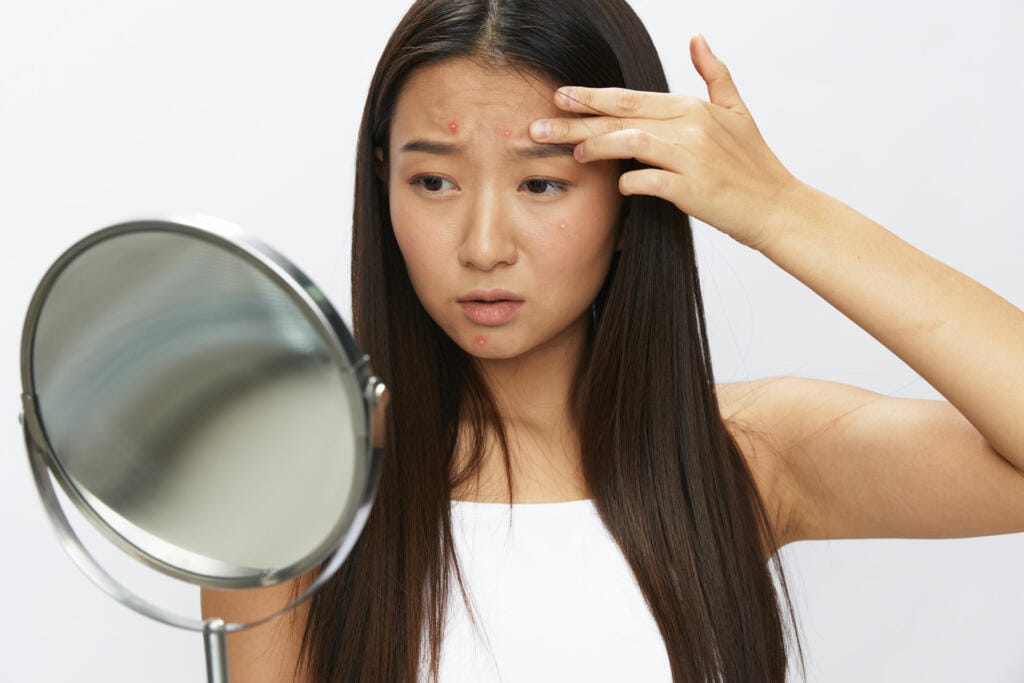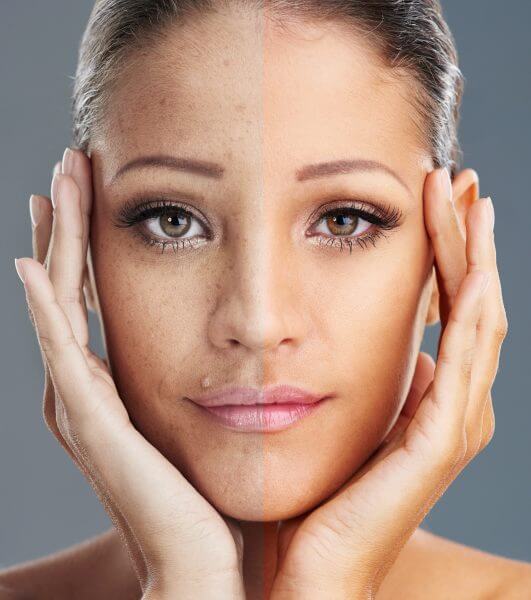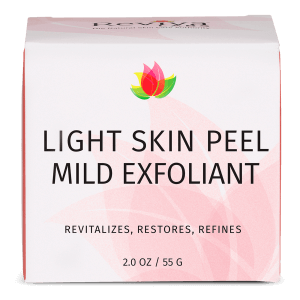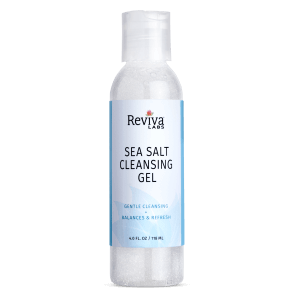Reviva Labs, Skin Care
How To Treat Whiteheads?
Whiteheads can be an ongoing concern for those aiming to maintain clear and healthy skin. These small, white bumps form when dead skin cells, oil, and bacteria get trapped in pores, and unlike blackheads, the clogged pore remains closed. Although whiteheads are common, especially for individuals with oily or combination skin, their occurrence can be a frustrating challenge. The good news is that there are effective ways to treat and prevent whiteheads, ensuring your complexion stays smooth and clear.
What Causes Whiteheads?
Before diving into treatments, it’s essential to understand the factors that lead to whitehead formation. Several factors can contribute, and understanding these can help in managing them more effectively. Excess oil production is one of the primary reasons. When the skin produces too much oil, it can mix with dead skin cells, leading to clogged pores.
Hormonal changes also play a significant role. These fluctuations, especially during puberty, menstruation, pregnancy, or even while using certain medications, can increase the likelihood of breakouts. Whiteheads thrive in an environment where the skin is producing excess oil, so these hormonal surges often cause or worsen the issue. Additionally, environmental factors such as pollution, humidity, and even skincare products that are too heavy can all contribute to the development of whiteheads.
Effective Cleansing Practices
The foundation of any skincare routine aimed at treating whiteheads is proper cleansing. Cleaning your face twice daily, once in the morning and once before bed, is a crucial step. However, not all cleansers are created equal, and it’s important to choose one that suits your skin type. A gentle, non-comedogenic cleanser works best to avoid further irritation. Harsh soaps or scrubs can strip the skin of its natural oils, prompting your body to produce more oil, which only worsens whitehead formation.
Micellar water can also be a good option for removing dirt and oil without over-drying the skin. This gentle product uses micelles, which are tiny molecules that work like magnets to lift impurities from the skin. When choosing a cleanser, ensure that it won’t clog pores, as heavy or greasy formulations can contribute to the issue you’re trying to solve.
Exfoliation and Whitehead Prevention
Regular exfoliation is key in preventing the buildup of dead skin cells that contribute to clogged pores. Opt for gentle exfoliants to remove dead skin cells and keep your pores clear. Over-exfoliation can irritate the skin, increasing oil production, so it’s important to find a balance. Typically, exfoliating one to three times per week is sufficient for most skin types, but it’s always best to monitor how your skin responds.
Chemical exfoliants, such as those containing alpha hydroxy acids (AHAs) and beta hydroxy acids (BHAs), are highly effective. AHAs, like glycolic acid, work on the surface layer of the skin, helping to clear dead cells. BHAs, particularly salicylic acid, penetrate deeper into the pores, making them more suitable for individuals dealing with whiteheads. A study published by the Journal of Clinical and Aesthetic Dermatology found that salicylic acid reduced acne lesions by 47% over a six-week period.
Physical exfoliants can also be helpful, but they need to be used cautiously. Look for scrubs with fine, non-abrasive particles, as overly aggressive exfoliators can cause micro-tears in the skin, leading to inflammation and even more breakouts.
The Role of Topical Treatments
Targeted treatments can be very effective in treating whiteheads. Benzoyl peroxide is a well-known option that kills bacteria on the skin and helps to dry up excess oil. It can also reduce inflammation, which is particularly beneficial for more inflamed breakouts. Benzoyl peroxide is available in various strengths, so it’s wise to start with a lower concentration if your skin is sensitive.
Another powerful topical treatment is retinoids. Retinoids help to increase cell turnover, which prevents dead skin cells from clogging the pores. They are available over the counter in lower concentrations or through a dermatologist for stronger formulations. Regular use of retinoids not only helps to treat whiteheads but can also improve overall skin texture and reduce the appearance of fine lines.
Salicylic acid, as previously mentioned, is another excellent choice for whiteheads. Its oil-soluble properties allow it to penetrate the skin more deeply, clearing out blocked pores. For best results, salicylic acid can be applied as a spot treatment on affected areas or incorporated into your daily skincare routine through cleansers or toners.

Moisturizing Without Clogging Pores
Many people with acne-prone skin hesitate to use moisturizers, fearing they will exacerbate oil production. However, moisturizing is a vital step in any skincare routine, even for those dealing with whiteheads. The key is selecting the right type of moisturizer. Look for lightweight, non-comedogenic products that hydrate without clogging pores. Moisturizers that contain ingredients like hyaluronic acid are excellent choices because they provide moisture without adding excess oil to the skin.
Skipping the moisturizer can lead to dehydrated skin, which, paradoxically, can cause your skin to produce more oil to compensate. This can create the perfect environment for whiteheads to form, so keeping your skin hydrated is a must.
Avoiding Pore-Clogging Ingredients
When treating whiteheads, it’s important to be mindful of the skincare products and cosmetics you’re using. Avoid products that contain heavy oils, which can clog pores and worsen breakouts. Coconut oil, for example, is a known comedogenic ingredient, meaning it is more likely to block pores.
Instead, opt for oil-free and non-comedogenic products. Ingredients like tea tree oil, which has natural antibacterial properties, can be effective for keeping pores clear. Similarly, niacinamide is an anti-inflammatory ingredient that can help regulate oil production and soothe irritated skin. Keeping an eye on your product labels and understanding which ingredients to avoid will make a big difference in reducing whitehead formation.
Lifestyle Factors That Impact Whiteheads
Aside from topical treatments, certain lifestyle habits can help in preventing whiteheads. Maintaining a balanced diet, rich in fruits, vegetables, and whole grains, can support overall skin health. Diets high in sugar and dairy have been linked to increased breakouts for some individuals, so it may be beneficial to monitor your intake of these foods.
Stress is another factor that can trigger breakouts, including whiteheads. High levels of stress prompt the body to release cortisol, a hormone that can increase oil production and lead to clogged pores. Incorporating stress management techniques, such as meditation, exercise, or even deep-breathing exercises, can positively impact your skin.
How to Handle Existing Whiteheads
When dealing with whiteheads, it’s tempting to try and squeeze them, but this can lead to scarring or infection. Instead, resist the urge to pop them and allow your topical treatments to work. If the whitehead persists, consider visiting a dermatologist who can extract it safely.
Over-the-counter spot treatments with salicylic acid or benzoyl peroxide can help speed up the healing process, but patience is key. Whiteheads will often resolve on their own with the right care and popping them can prolong the healing time.
For those who experience chronic whiteheads, especially in clusters or large areas, professional treatments such as chemical peels or light therapy may be worth exploring. These treatments can provide deeper exfoliation, helping to clear out blocked pores more effectively.
The Importance of Consistency
Successfully treating whiteheads requires consistency. Skincare routines should be followed daily to keep oil production in check and prevent pores from becoming clogged. It’s not just about treating the symptoms but addressing the underlying causes to prevent whiteheads from recurring. With regular cleansing, exfoliation, and targeted treatments, it’s possible to reduce the frequency of whiteheads and maintain clearer, healthier skin.
Whether you’re dealing with an occasional whitehead or more frequent breakouts, these strategies can help you regain control over your skin. Through thoughtful product selection, lifestyle adjustments, and consistent care, you can effectively treat and prevent whiteheads, revealing a clearer complexion that feels as good as it looks.











